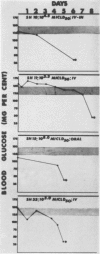Abstract
Muskrats (Ondatra zibethicus) and snowshoe hares (Lepus americanus) were exposed experimentally by various routes to a chlamydial agent (designated strain M56) originally isolated during a die-off of muskrats and snowshoe hares which occurred in Saskatchewan during 1961. Both species were susceptible to experimental infection. Whereas M56 was highly lethal for snowshoe hares (18 deaths/19 exposed), it was less virulent for muskrats (6 deaths/20 exposed).
The degree of susceptibility of muskrats to induced infections with M56 was influenced by the presence or absence of specific antibodies at the time of exposure. A febrile illness was observed in 11 of 20 muskrats. In the six that died, widespread focal necrosis was found in the liver. Following intraperitoneal or oral exposures, chronic infections were established and the agent was recovered from the brain and the small intestine up to 96 days post-infection. Specific antibodies were found in 11.8% of 127 sera of muskrats trapped form the wild in Saskatchewan, the Canadian Arctic, and Wisconsin.
In snowshoe hares, M56 induced an acute, febrile, emaciating illness, and the almost invariable fatal course was short with terminal signs of opisthotonos, convulsions, and hypoglycemia. Snowshoe hares succumbed with intravenous doses of less than ten mouse intracerebral LD50 of M56. The same syndrome was produced by intravenous, subcutaneous, and oral infections. M56 was found in high titers in all tissues examined. The highest titers were found in the liver and spleen which correlated with the pathology observed. M56 was recovered from female rabbit ticks (Haemaphysalis leporispalustris) engorging on experimentally infected snowshoe hares.
Full text
PDF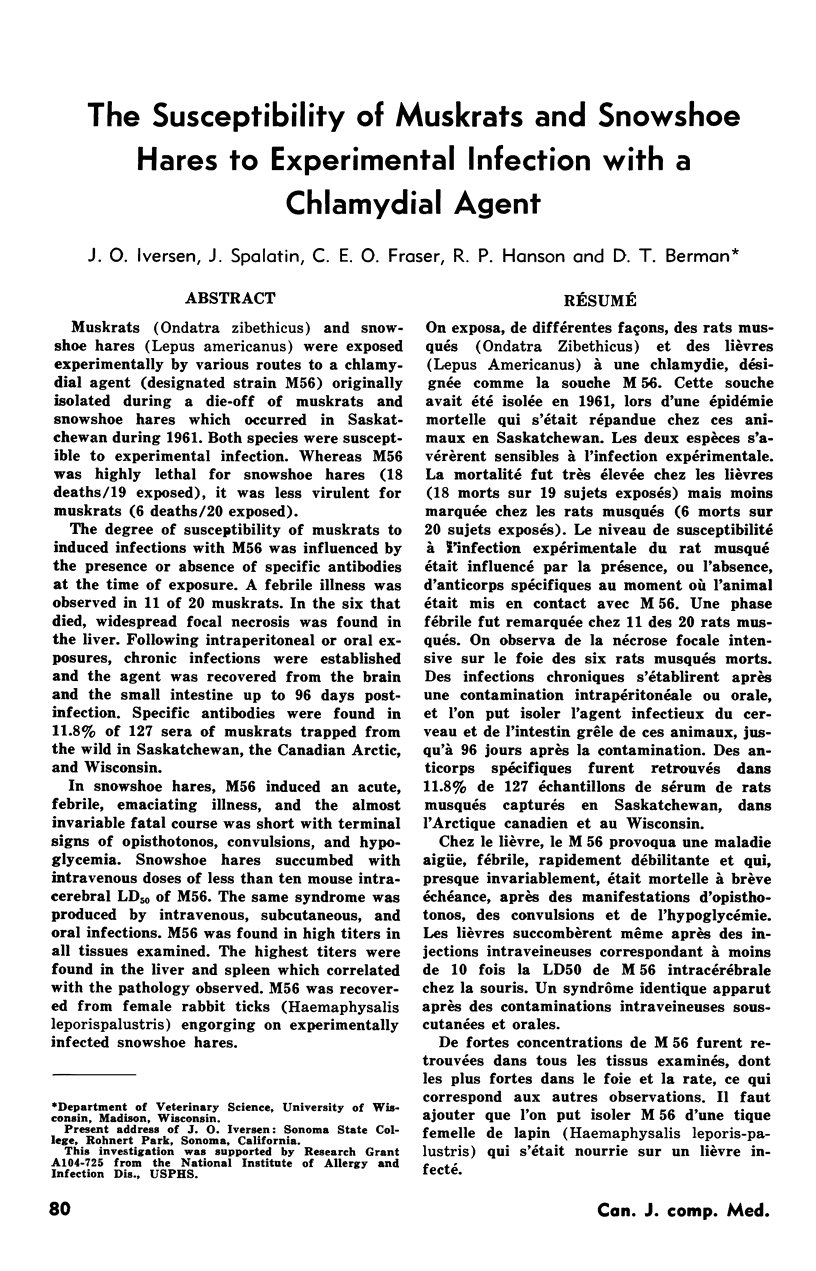
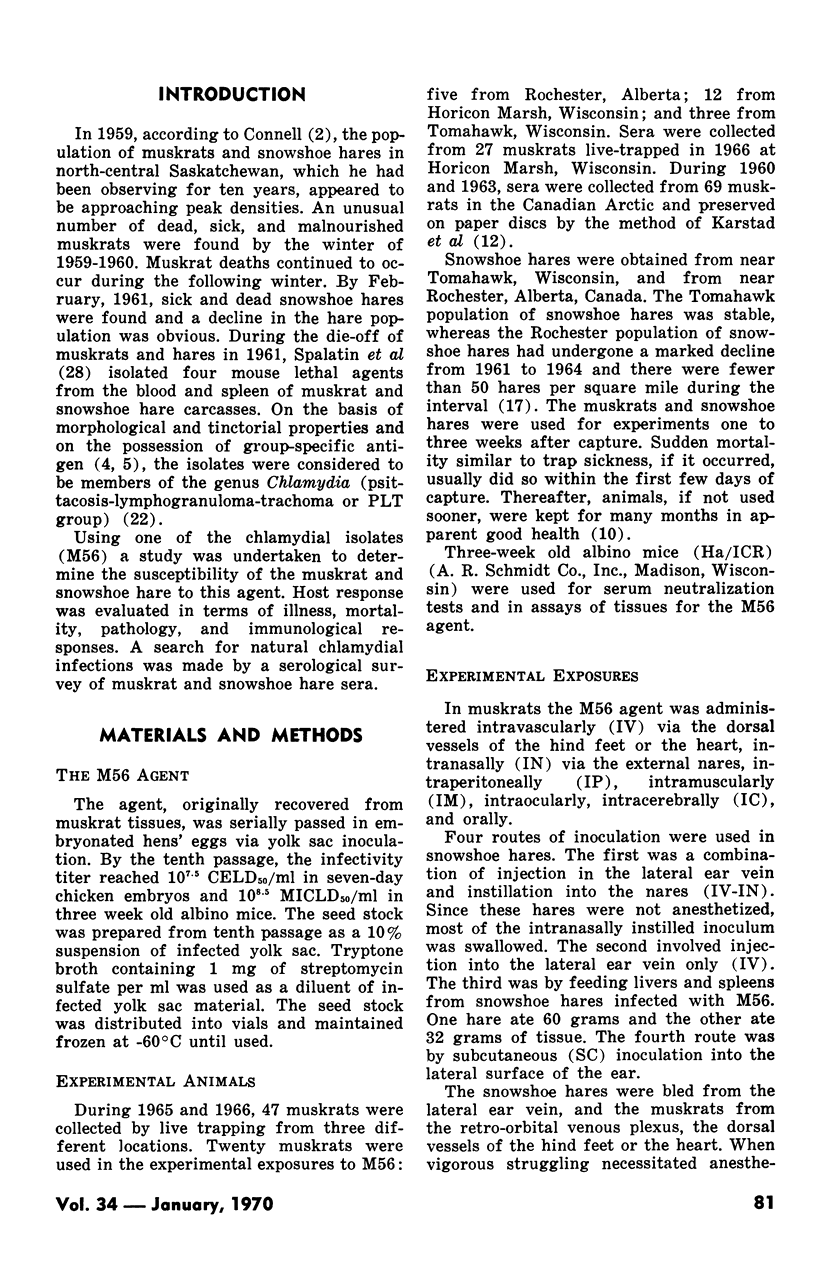
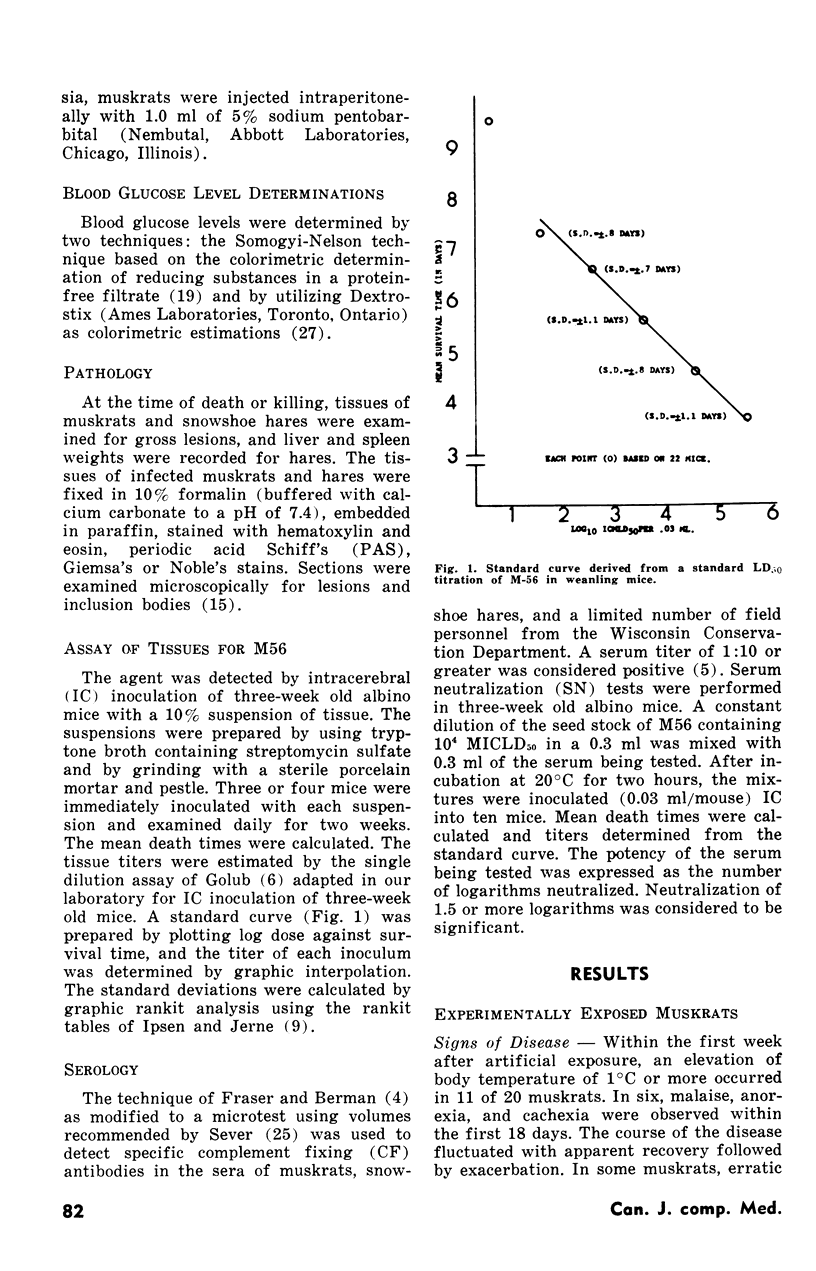
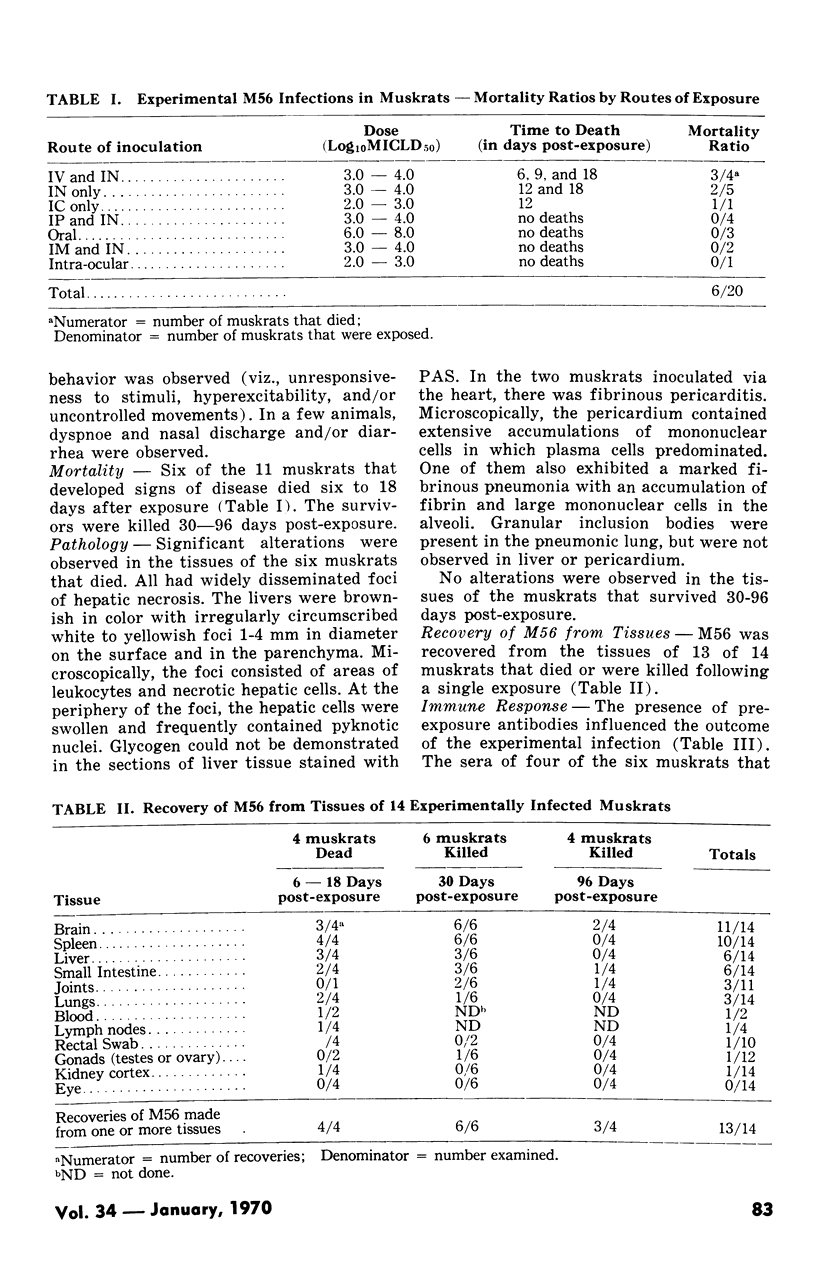
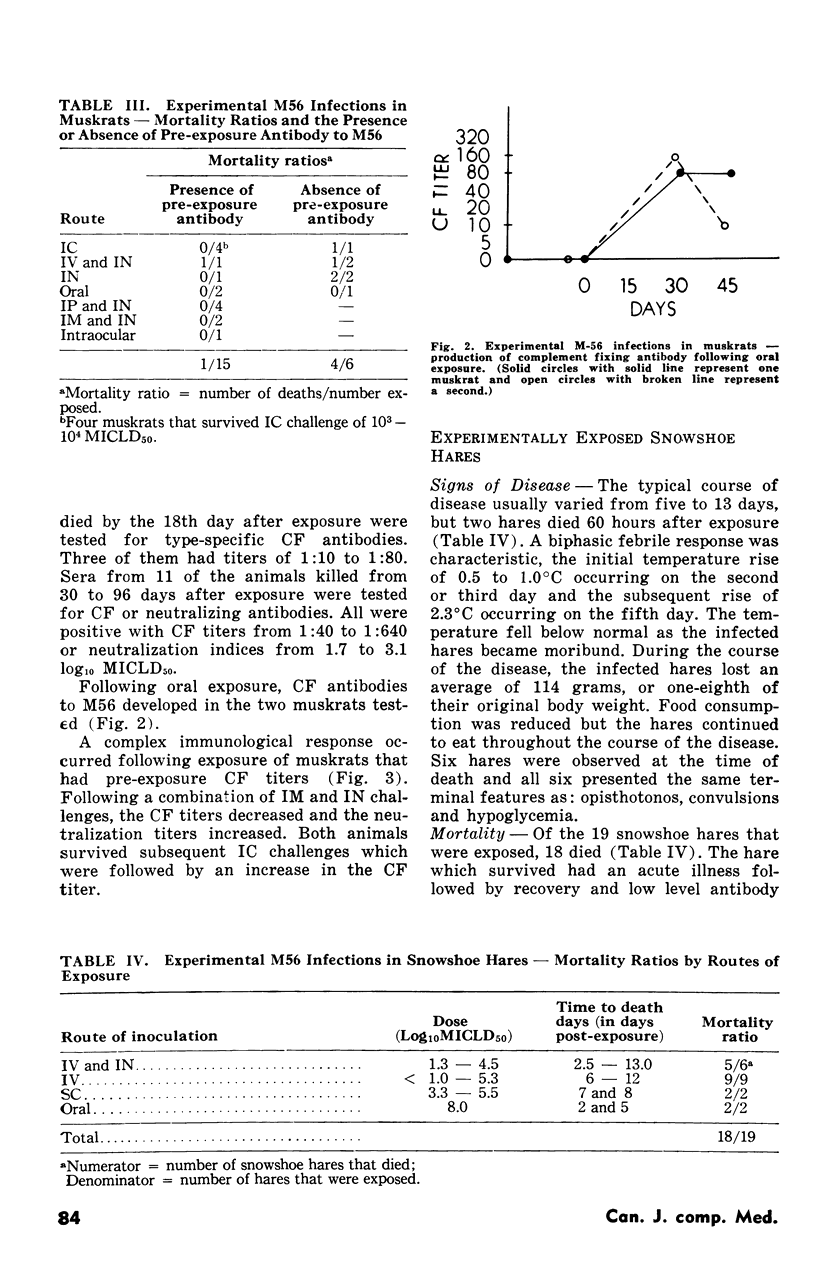
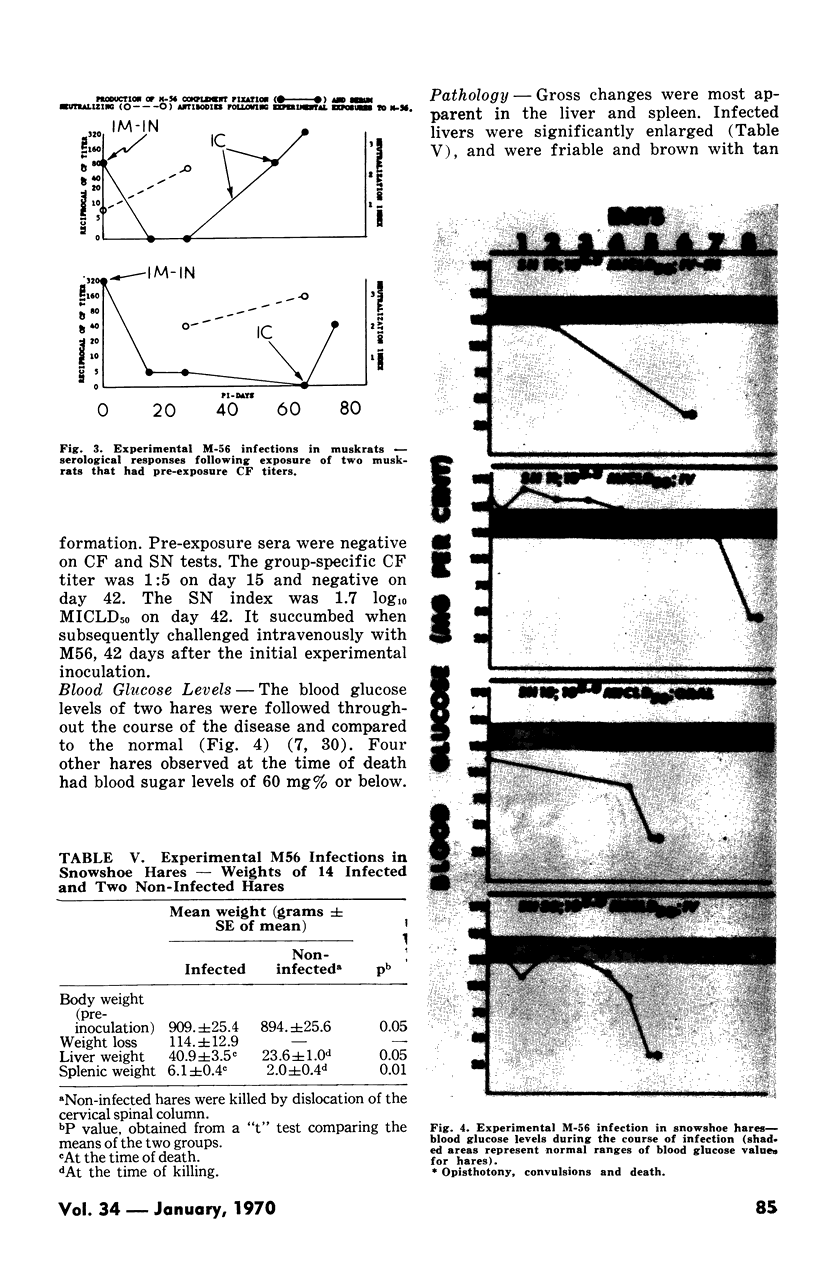
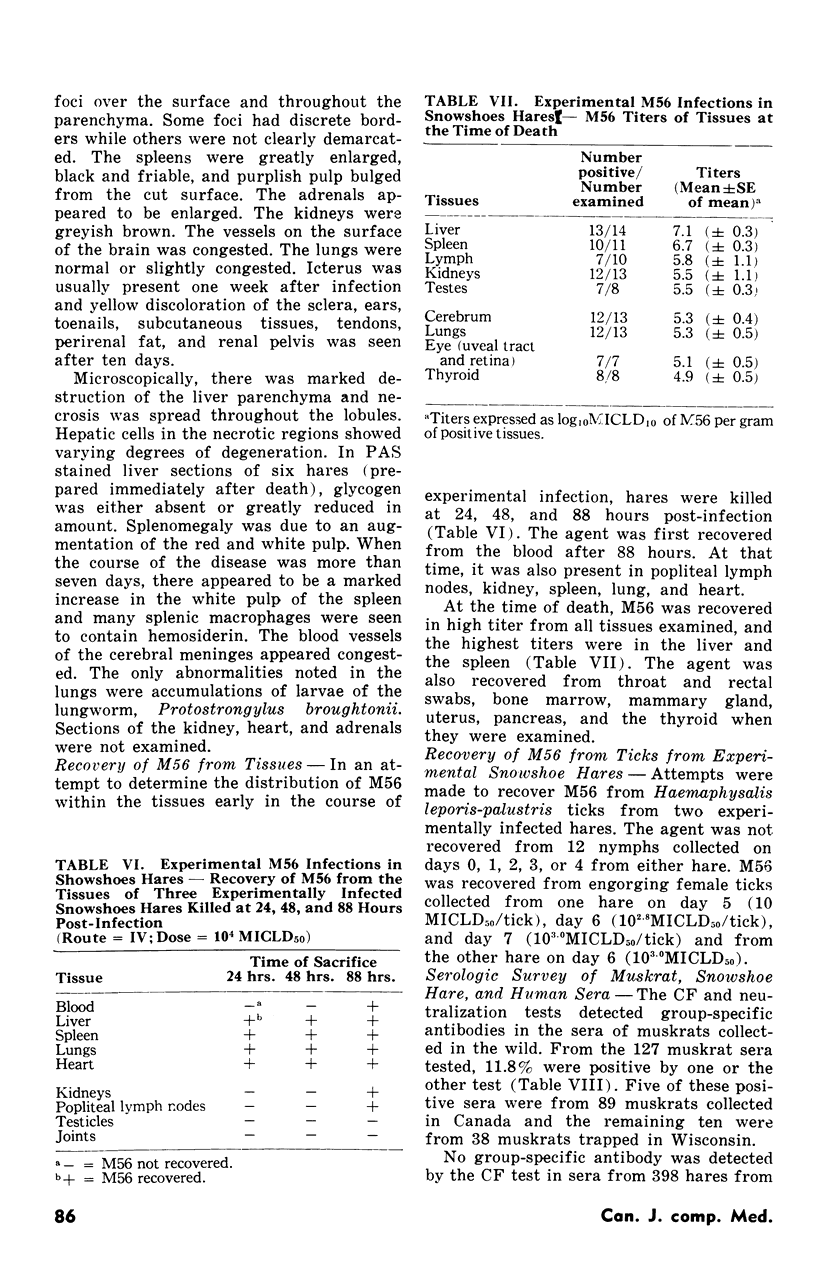
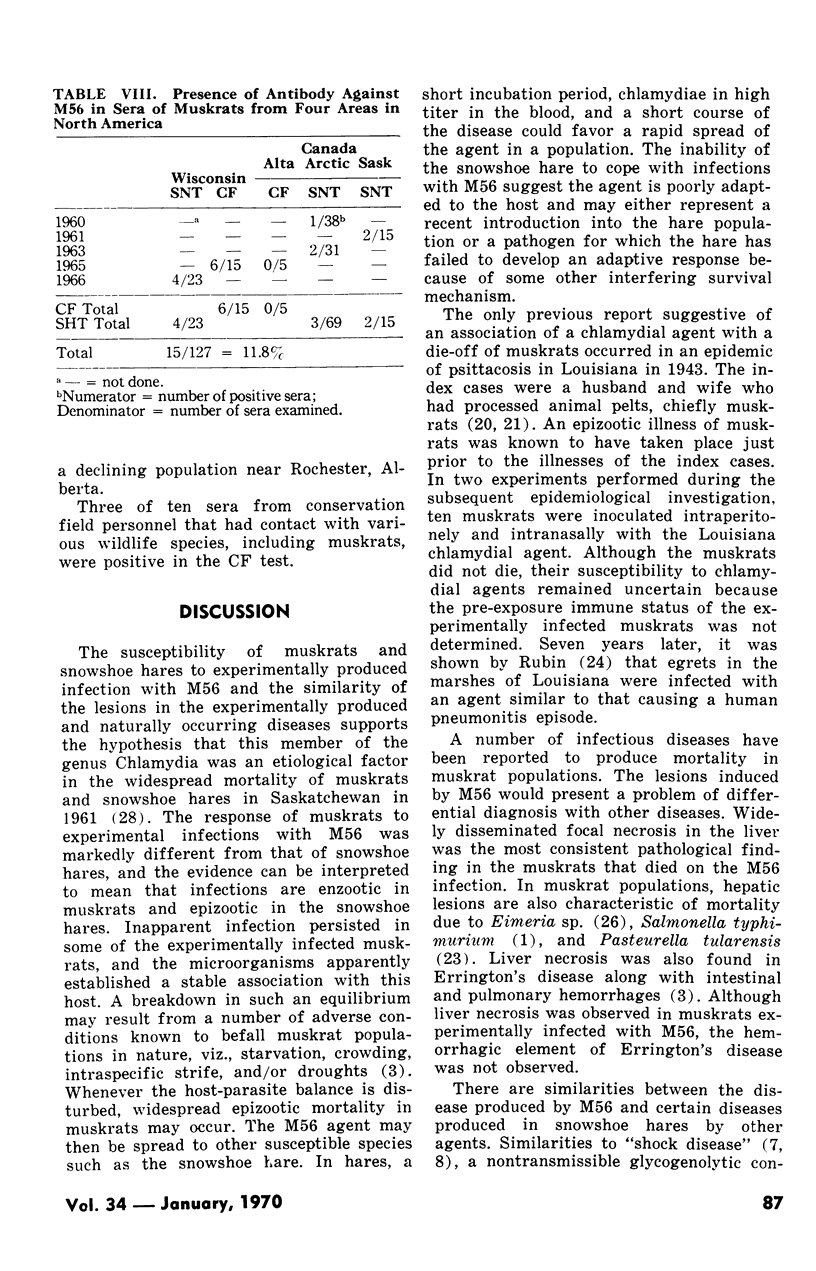
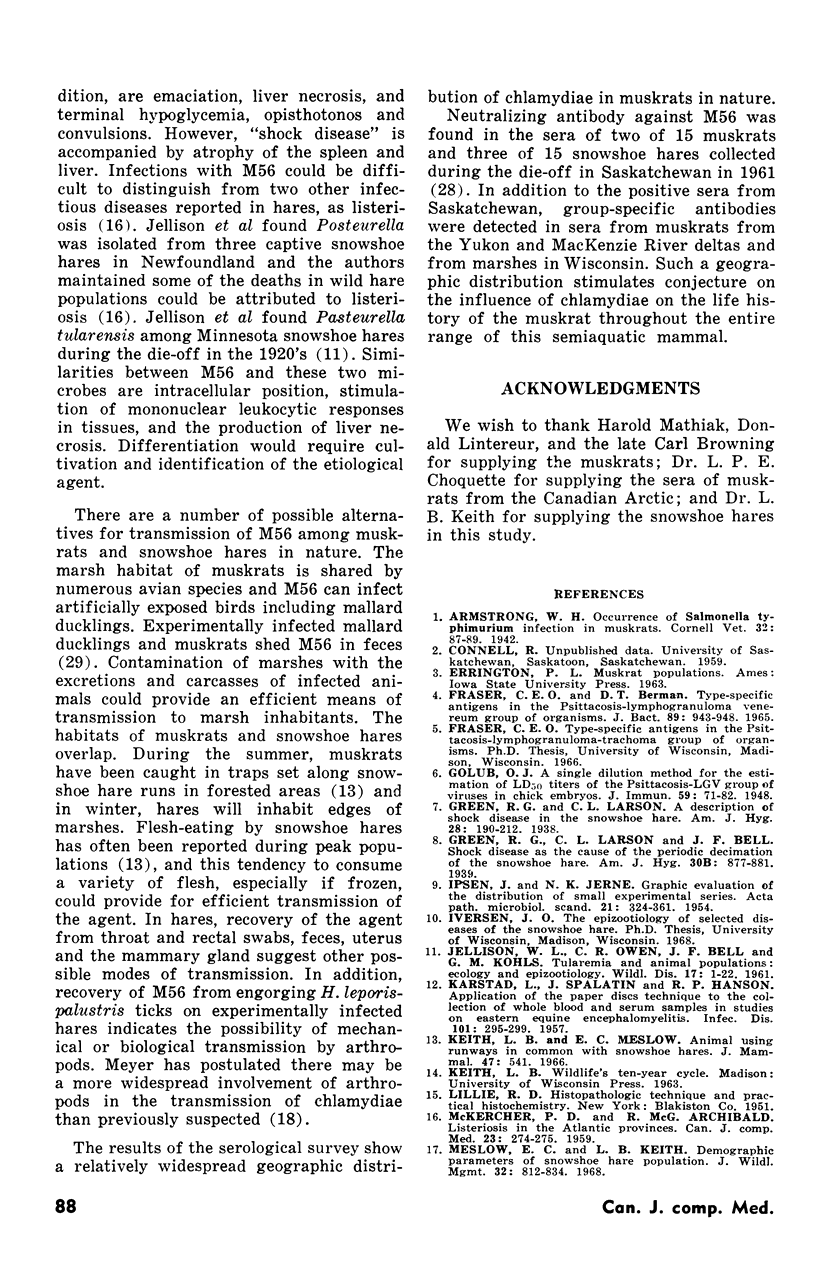
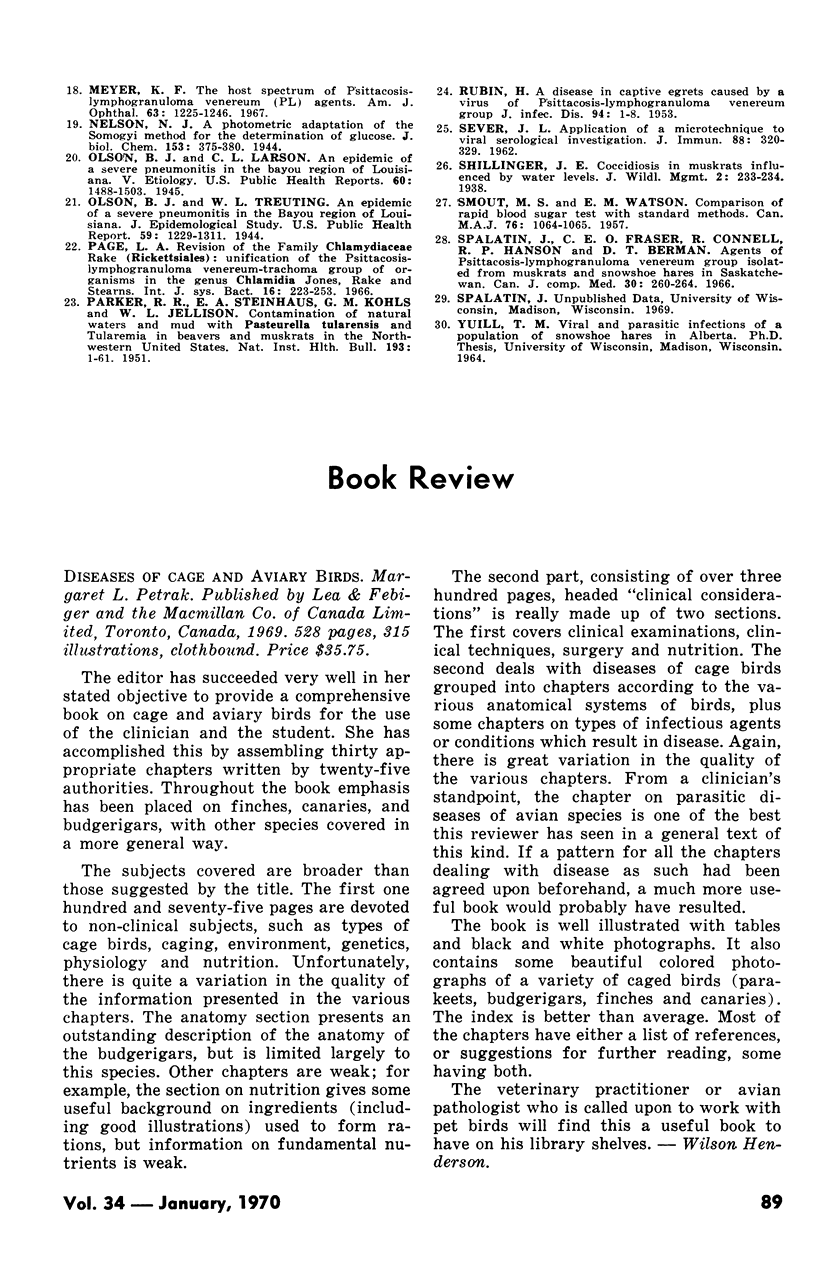
Images in this article
Selected References
These references are in PubMed. This may not be the complete list of references from this article.
- FRASER C. E., BERMAN D. T. TYPE-SPECIFIC ANTIGENS IN THE PSITTACOSIS-LYMPHOGRANULOMA VENEREUM GROUP OF ORGANISMS. J Bacteriol. 1965 Apr;89:943–948. doi: 10.1128/jb.89.4.943-948.1965. [DOI] [PMC free article] [PubMed] [Google Scholar]
- KARSTAD L., SPALATIN J., HANSON R. P. Application of the paper disc technique to the collection of whole blood and serum samples in studies on eastern equine encephalomyelitis. J Infect Dis. 1957 Nov-Dec;101(3):295–299. doi: 10.1093/infdis/101.3.295. [DOI] [PubMed] [Google Scholar]
- McKercher P. D., Archibald R. M. Listeriosis In The Atlantic Provinces. Can J Comp Med Vet Sci. 1959 Aug;23(8):274–275. [PMC free article] [PubMed] [Google Scholar]
- Meyer K. F. The host spectrum of psittacosis-lymphogranuloma venereum (PL) agents. Am J Ophthalmol. 1967 May;63(5 Suppl):1225–1246. doi: 10.1016/0002-9394(67)94105-0. [DOI] [PubMed] [Google Scholar]
- PARKER R. R., STEINHAUS E. A., KOHLS G. M., JELLISON W. L. Contamination of natural waters and mud with Pasteurella tularensis and tularemia in beavers and muskrats in the northwestern United States. Bull Natl Inst Health. 1951;193:1–161. [PubMed] [Google Scholar]
- RUBIN H. A disease in captive egrets caused by a virus of the psittacosis-lymphogranuloma venereum group. J Infect Dis. 1954 Jan-Feb;94(1):1–8. doi: 10.1093/infdis/94.1.1. [DOI] [PubMed] [Google Scholar]
- SEVER J. L. Application of a microtechnique to viral serological investigations. J Immunol. 1962 Mar;88:320–329. [PubMed] [Google Scholar]
- SMOUT M. S., WATSON E. M. Comparison of a rapid blood sugar test (dextrotest) with standard methods. Can Med Assoc J. 1957 Jun 15;76(12):1064–1065. [PMC free article] [PubMed] [Google Scholar]
- Spalatin J., Fraser C. E., Connell R., Hanson R. P., Berman D. T. Agents of psittacosis-lymphogranuloma venereum group isolated from muskrats and snowshoe hares in Saskatchewan. Can J Comp Med Vet Sci. 1966 Sep;30(9):260–264. [PMC free article] [PubMed] [Google Scholar]



